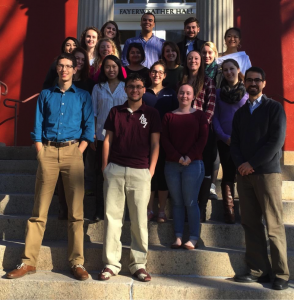By Vikram Jaswal
Autism is a lifelong, neurodevelopmental condition whose cause is unknown. It’s thought to affect around 1 in 68 people (or maybe even 1 in 45), and is evident early in development, usually by the age of three. Autism is most commonly associated with social differences. For example, autistic people may show more interest in objects than people; non-autistics tend to show the reverse. But autism is a spectrum: Some autistics talk too much, some don’t talk at all; some are bothered by bright lights and loud sounds, some thrive on them; some score off the charts on IQ tests, some are unable to take those tests. There’s a saying in the autism community, “If you know one person with autism, . . . you know one person with autism.”
I am a developmental psychologist in the Department of Psychology at UVa. For the past 15 years or so, my research and teaching have focused on how typically developing children acquire language, develop strategies to remember things, and learn from other people. Recently, however, motivated by both personal and professional interest, I have turned my attention to autism. In a future post, I hope I’ll have the chance to tell you about some exciting autism-related work we’re beginning in my lab. Here, though, I’d like to share with you some musings and materials from an undergraduate seminar on autism I taught last semester (Fall 2015), an experience that was the highlight of my teaching at the University.
The seminar was entitled “Autism: From Neurons to Neighborhoods.” I designed the course so that I would have the chance to think together with some terrific students about the state of autism science, and how well it captures the lived experience of autistic individuals. We quickly discovered that most of the scientific literature focuses on how fundamentally different autistics are from non-autistics, while many first-person and family accounts (and the occasional study) suggest that some of these differences may be more apparent than real.
For example, some scientists suggest that autistic people are not motivated to connect with other people, while some autistic people themselves report an intense desire to do so. Who should we believe? And how should that inform how autistic people are treated and educated? (You can have a look at the syllabus here. A wonderful, fresh perspective on autism was also published this fall–too late to make it onto the syllabus, but well worth a read.)
For their capstone project, students produced for the Disability@UVA blog (in small groups) a 5-minute “presentation for the public” about a controversial issue, myth, or misconception about autism. I don’t think they need further introduction, and so I invite you to watch and reflect on these remarkable presentations. (To turn on closed captioning, click on the gear symbol in the bottom right corner of the youtube window. Lots of research shows that everyone benefits from captioning!)
- Do autistics lack a theory of mind?
- Is there an autism epidemic?
- Should autistic students be educated in inclusive or self-contained classrooms?
- How do non-speaking people who learn to communicate by typing or writing challenge conventional notions of intelligence?

Vikram Jaswal is Associate Professor in the Department of Psychology at UVa.
Thank you to Vikram and his wonderful students for taking the first person perspectives and comparing this experience to autism research. This is an important connection that is often lost to professionals in our search for answers.
I am listening to Prizant’s book now and always find his perspective and compassion affirming.
I will share the videos far and wide.